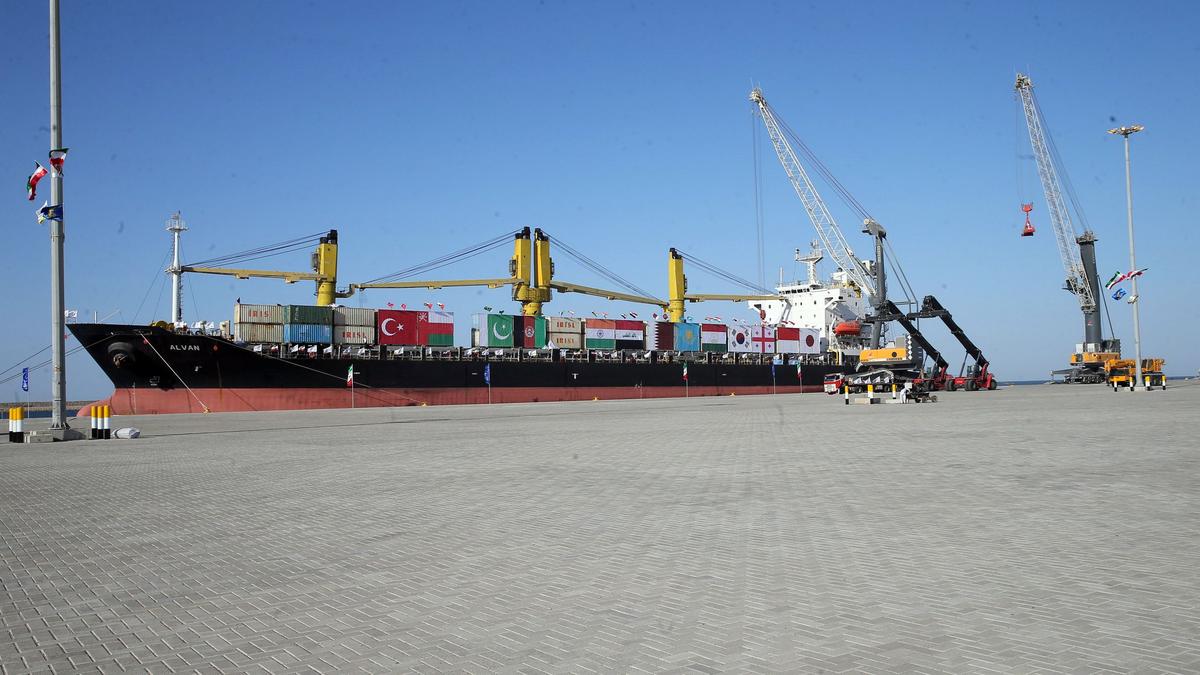Live Classes

The recently concluded contract between India and Iran, which gives New Delhi rights to invest in and operate the Shahid-Behesti terminal at Chabahar Port for another 10 years, has created many headlines. The port remains the crown project anchoring economic relations between the two countries. The deal came at a precarious time in West Asia as the war in Gaza continues unabated, Israel-Iran tensions remain critical, and the passing of Iran’s President and Foreign Minister in a helicopter accident challenges domestic politics in Tehran.
Representative of India’s thinking
There is no denying that the Chabahar project is an important endeavour for both economic and strategic reasons. At the core of it, Chabahar, for India, represents its thinking from the perspective of an extended neighbourhood, and not necessarily as part of its West Asia outlook. The port is a fulcrum of the International North–South Transport Corridor, a project looking towards seamlessly linking India with Central Asia and Russia, bypassing Pakistan. Beyond this, Chabahar is also astutely tuned into the ‘new’ realities of Afghanistan. The Taliban-led interim government in Kabul has also thrown its weight behind the port, offering an investment of $35 million as it looks to secure alternatives and not be economically reliant on Pakistani ports such as Karachi or the China-backed Gwadar. In November 2023, Taliban leader Mullah Baradar visited Chabahar, with Shahid-Behesti visible in the background.
Bilaterally for India and Iran, Chabahar is also a symptom of challenges between the two states. While there is a lot of public championing for the project, and for good reasons, if it was not for Chabahar, India-Iran ties today would look extremely dry. The reasons are multifaceted and tied to both country’s views of their national, regional, and geopolitical interests. Instead of expanding projects and economic cooperation beyond Chabahar, many older ones, such as the gas field Farzad-B which was discovered by Indian state-owned enterprise ONGC Videsh, have now been written off. Another old bilateral platform, the IranoHind shipping company, was dissolved in 2013 because of sanctions. Chabahar, is a legacy project, which has its foundations going back to 2003. This was an era when India was opening to developing economic assets abroad. Chabahar in Iran was one, Sakhalin-I in Russia, was another.
A reflection of diplomacy
The geopolitics today that surrounds India’s play in Chabahar, and Iran’s leverages, make for an interesting study. This latest iteration of the deal was signed not too long after both Israel and Iran exchanged missile fire and came critically close to a full-scale conflict. India’s Adani Group, meanwhile, has also invested in a large port project in Israel. The company bought Israel’s Haifa port on the Mediterranean Sea for $1.2 billion. This was also made possible in part due to India’s participation in new diplomatic and economic endeavours with the United States, Israel, and Arab partners, such as the I2U2 and India-Middle East-Europe Economic Corridor.
The fact that India’s buy-in into Haifa was not a constraint for the Chabahar deal to go through is not only a testament to Indian diplomacy but also for the U.S. to also recognise that this kind of access which New Delhi has is beneficial, and not detrimental, to Washington.
Recent remarks from the U.S. over potential sanctions against Chabahar stand out as myopic. India’s relations with Iran and the continuity of Chabahar’s development, which offers access to difficult political terrain such as Central Asia, and even Afghanistan, could bring in a significant level of integration and help in building alternatives to China-backed projects. Despite public discourse, China’s heavy financial might and the 2021 strategic deal with Iran, does not automatically make Tehran subservient to Beijing. Iran is a quintessential survivalist state and plays a diverse set of cards in its playbook of geopolitics.
The Biden administration would benefit by not blindly following former U.S. President Barack Obama’s doctrine on how to deal with India-Iran ties, and Chabahar, at its centre. New Delhi burnt its fingers by giving Mr. Obama too much room when it completely stopped importing oil from Iran. This took Tehran, consistently among India’s top-two suppliers of oil for decades, out of the top 10. Even if India’s thinking was to build influence in Washington around the nuclear deal negotiations, Donald Trump as the U.S. President and the unilateral exit of the U.S. under his watch from the Joint Comprehensive Plan of Action (JCPOA) in 2018, recalibrated how non-partisanship and the stability of critical U.S. foreign policies were to be viewed thereafter.
The bigger picture
Finally, for Chabahar, there are two main points to consider moving forward. First, the port project cannot be the singular major play in the bilateral relationship. This concentration of interests is volatile. Second, the U.S. must move towards being accommodative on sanctions against Chabahar. Viewing the port as a collateral against problematic Iranian policies in West Asia would not be an accurate understanding of the big picture of India’s own outreach towards its extended neighbourhood which could benefit larger American aims as well.
This is important to be considered at a time when the U.S. itself maintains a channel with the Iranians not only through Swiss intermediators but, increasingly, through Oman and Qatar as well.
Download pdf to Read More